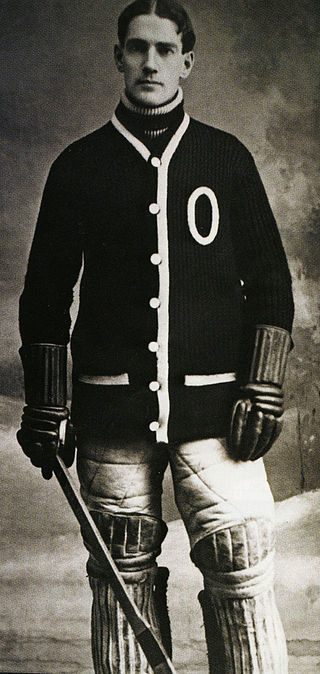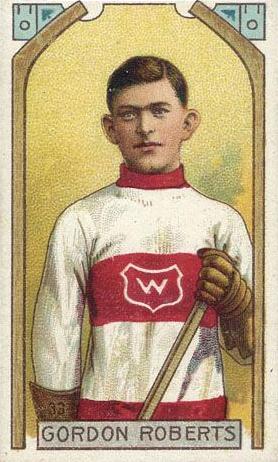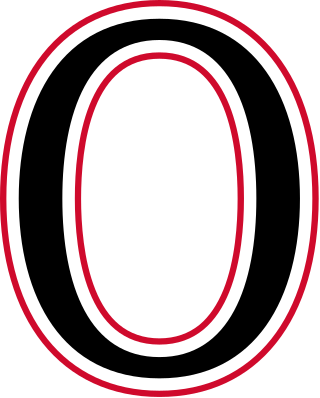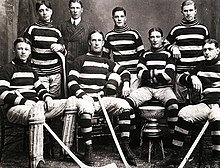
Maurice Joseph Malone was a Canadian professional ice hockey centre. He played in the National Hockey Association (NHA) and National Hockey League (NHL) for the Quebec Bulldogs, Montreal Canadiens, and Hamilton Tigers from 1910 to 1924. Known for his scoring feats and clean play, Malone led the NHL in goals and points in 1918 and 1920, and the NHA in goals twice, in 1913 and 1917. He won the Stanley Cup with Quebec in 1912 and 1913. He is the only player in the history of the NHL to score seven goals in a single game, accomplishing the feat in 1920. He was elected to the Hockey Hall of Fame in 1950.
The 1922–23 NHL season was the sixth season of the National Hockey League (NHL). Four teams played 24 games each. The Ottawa Senators defeated the Montreal Canadiens for the NHL championship, and then defeated Vancouver and Edmonton to win the Stanley Cup.

Edward George Gerard was a Canadian professional ice hockey player, coach, and manager. Born in Ottawa, Ontario, Canada, he played professionally for 10 seasons for his hometown Ottawa Senators. He spent the first three years of his playing career as a left winger before switching to defence, retiring in 1923 due to a throat ailment. Gerard won the Stanley Cup in four consecutive years from 1920 to 1923, and was the first player to win the Cup four years in a row. After his playing career he served as a coach and manager, working with the Montreal Maroons from 1925 until 1929, winning the Stanley Cup in 1926. Gerard also coached the New York Americans for two seasons between 1930 and 1932, before returning to the Maroons for two more seasons. He ended his career coaching the St. Louis Eagles in 1934, before retiring due to the same throat issue that had ended his playing career. He died from complications related to it in 1937.

Percivale St-Helier LeSueur, known as "Peerless Percy", was a Canadian senior and professional ice hockey goaltender and later involved in the game as referee, coach, manager and owner. He was a member of the Smiths Falls Seniors for three years, with whom his performance in a 1906 Stanley Cup challenge series attracted the attention of his opponents, the Ottawa Silver Seven. Although his team lost the series, LeSueur excelled in goal, keeping the games close. Nine days after the defeat, he joined the Silver Seven and played in a challenge match against the Montreal Wanderers. He remained with Ottawa through the 1913–14 season where he served as team captain for three seasons, and assumed coaching duties in his final season with the team.

William George McGimsie was a Canadian amateur ice hockey player. He played six seasons as a centre for the Rat Portage/Kenora Thistles between 1901 and 1907. A leading offensive player of his era, McGimsie led the Manitoba and North West Hockey League with 28 goals in 8 games in 1904–05. He was a member of three Thistles' teams that challenged for the Stanley Cup, winning the national championship in 1907. His career was ended when he suffered a separated shoulder in an exhibition game. McGimsie was inducted into the Hockey Hall of Fame in 1963.

Ernest Harvey Pulford was a Canadian athlete at the turn of the twentieth century, winning national championships in ice hockey, lacrosse, football, boxing, paddling and rowing. A highly regarded defenceman with the Ottawa Hockey Club, where he was known for being a large and solid player who was excellent at checking opponents. With Ottawa he won the Stanley Cup four times, and also won championships or tournaments in every sport in which he played. When the Hockey Hall of Fame was founded in 1945, Pulford was one of the original nine inductees.

Gordon William "Doc" Roberts was a Canadian professional ice hockey forward who played for the Ottawa Hockey Club and Montreal Wanderers of the National Hockey Association (NHA) and the Vancouver Millionaires and Seattle Metropolitans of the Pacific Coast Hockey Association (PCHA). He was a member of the Ottawa team that defended the Stanley Cup in a 1910 challenge; Roberts scored seven goals in two games in his team's victory over the Edmonton Hockey Club. He moved to Montreal in 1910 where he was consistently among the NHA's leading scorers with the Wanderers while also studying medicine at McGill University.

Alfred Edward Smith was a Canadian amateur and professional ice hockey forward who played for the Ottawa Senators and Kenora Thistles. He had six younger brothers who played senior-level hockey in Ottawa: Daniel, Jack, Harry, Tommy, Billy and George Smith. He was captain of the Ottawa Hockey Club and also coached the team.

The Ottawa Senators were an ice hockey team based in Ottawa, which existed from 1883 to 1954. The club was the first hockey club in Ontario, a founding member of the National Hockey League (NHL) and played in the NHL from 1917 until 1934. The club, which was officially the Ottawa Hockey Club, was known by several nicknames, including the Generals in the 1890s, the Silver Seven from 1903 to 1907 and the Senators dating from 1908.

The 1915 Stanley Cup Finals was played from March 22–26, 1915. The Pacific Coast Hockey Association (PCHA) champion Vancouver Millionaires swept the National Hockey Association (NHA) champion Ottawa Senators three games to none in a best-of-five game series. The finals were played in Vancouver, with games one, three and five played under PCHA rules. The Millionaires became the first team from the PCHA to win the Cup. This was the second Stanley Cup championship series between the champions of the NHA and the PCHA and the first held in a PCHA rink.
The 1904 Canadian Amateur Hockey League (CAHL) season was the sixth season of the league. Teams played an eight-game schedule. This was a tumultuous year as Ottawa resigned in February and defaulted four games. The Quebec Hockey Club placed first to take the championship. Quebec did not play for the Stanley Cup.
The 1906 ECAHA season was the inaugural season of the Eastern Canada Amateur Hockey Association (ECAHA). Six teams played a 10-game schedule. The Ottawa HC and Montreal Wanderers tied for the league championship with a record of 9–1, while the Montreal Shamrocks didn't win a single game. The Senators and the Wanderers then played a two-game playoff for the league championship and the Stanley Cup, and the Wanderers won 9–1,3–9 (12–10) on goals.
The 1909 ECHA season was the fourth and final season of the Eastern Canada Hockey Association (ECHA). Teams played a twelve-game schedule. The Ottawa Hockey Club would win the league championship with a record of ten wins, two losses and take over the Stanley Cup.

The 1904–05 Federal Amateur Hockey League (FAHL) season lasted from December 31, 1904, until March 3. Teams played an eight-game schedule.

Thomas Neil Phillips was a Canadian professional ice hockey left winger. Like other players of his era, Phillips played for several different teams and leagues. Most notable for his time with the Kenora Thistles, Phillips also played with the Montreal Hockey Club, the Ottawa Hockey Club, the Toronto Marlboros and the Vancouver Millionaires. Over the course of his career Phillips participated in six challenges for the Stanley Cup, the championship trophy of hockey, winning twice: with the Montreal Hockey Club in 1903 and with the Kenora Thistles, which he captained, in January 1907. Following his playing career, Phillips worked in the lumber industry until his death in 1923.
The 1903–04 Ottawa Hockey Club season, the club's 19th season of play, lasted from December 30, 1903, until March 11, 1904. Ottawa resigned from the CAHL after four games and played only Stanley Cup challenges for the rest of the season, winning them all.
The 1904–05 Ottawa Hockey Club season, the club's 20th season of play, lasted from January 7, 1905, until March 11, 1905. Ottawa won the league championship of the Federal Amateur Hockey League and successfully defended its Stanley Cup championship against all challengers.
The 1905–06 Ottawa Hockey Club season, the club's twenty-first season, saw the Silver Seven defend their Stanley Cup championship in two challenges, but lose the Cup in a league playoff with the Montreal Wanderers. The Club moved to the new Eastern Canada Amateur Hockey Association (ECAHA) formed in 1905.
The 1910 NHA season was the first season of the National Hockey Association men's professional ice hockey league. The season started on January 5, but was suspended immediately and the league then absorbed the Ottawa and Shamrocks teams of the Canadian Hockey Association and the season continued from January 15 to March 15. Seven teams played 12 games each. The Ottawa Hockey Club played two Stanley Cup challenges during the season, but lost the Cup to their rivals the Montreal Wanderers who won the league championship and played a Cup challenge afterwards.













